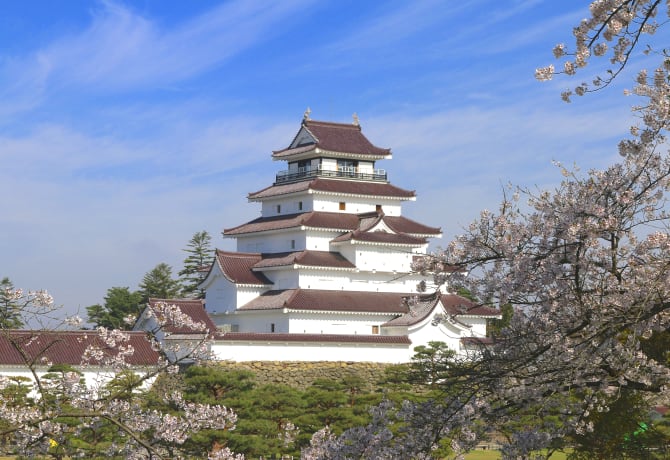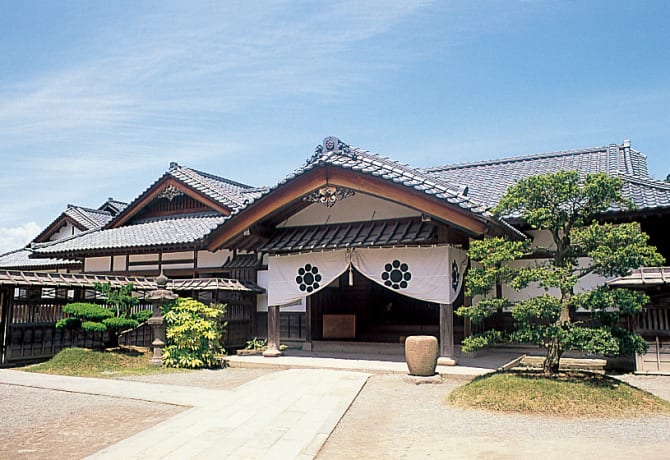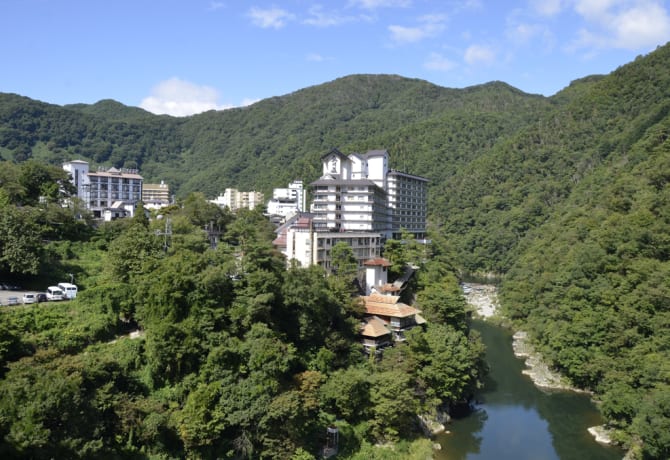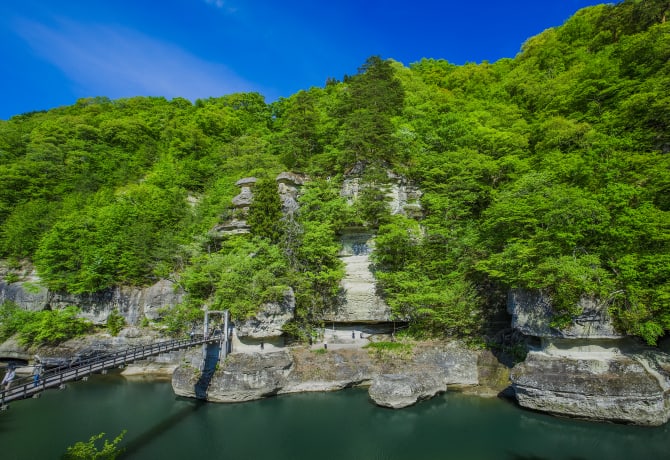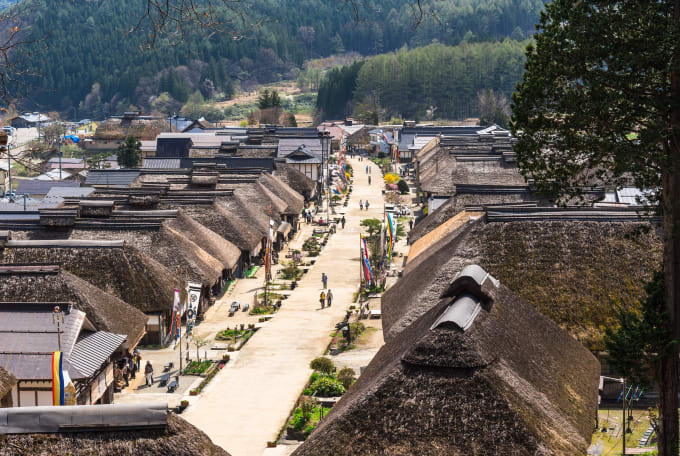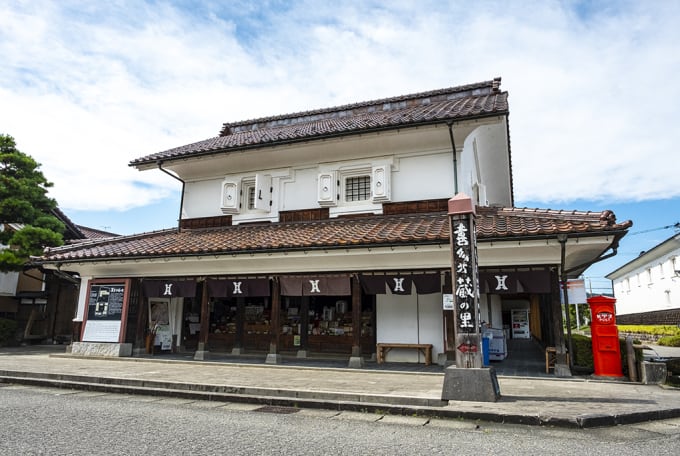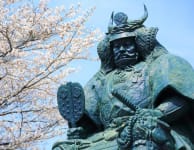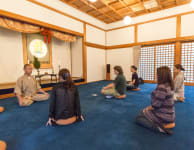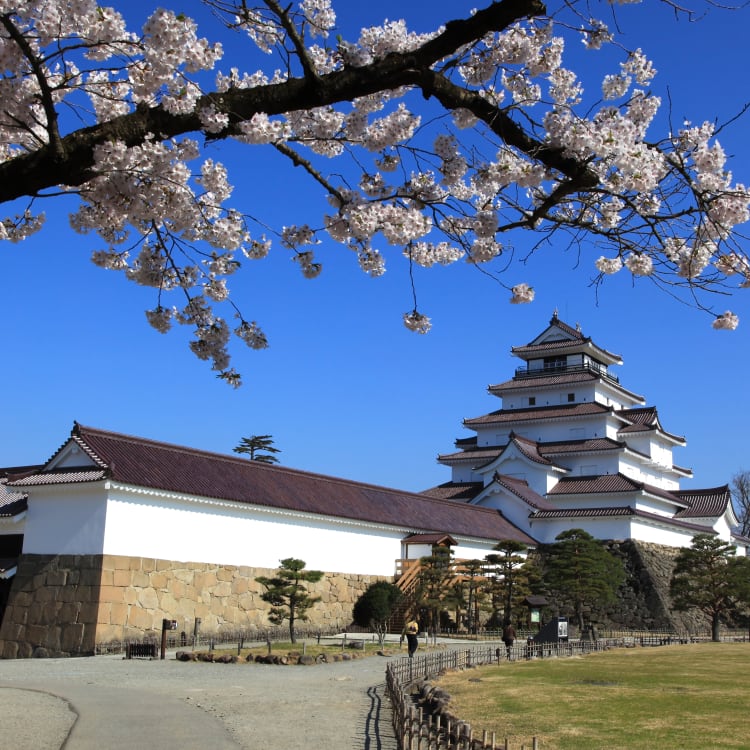

ITINERARIES Exploring Aizu's Samurai Spirit Live and breathe Japan's history of samurai warriors and merchants
Immerse yourself in the philosophy of the samurai through an exploration of castles, temples and post towns.
Highlights
- Standing on the grounds of Tsuruga Castle, where one of the fiercest samurai battles was fought
- Visiting a top samurai's quarters and the spot where 19 warriors lost their lives.
- Exploring the preserved townscapes in Ouchijuku, a former post town, and Kitakata, a prosperous merchant town in days past
Stand on the grounds where one of the fiercest samurai battles in the Boshin War of 1868 was fought. As one of the last strongholds of Aizu samurai loyal to the Tokugawa Shogunate, this was where an uprising against the new government was fought.
The castle, which was first built in 1384, had been destroyed in the process but was rebuilt in the 1960s. It has since been recognized as a symbol of the brave samurai who proudly fought until the very end. One distinctive feature to take notice of is its red-tiled roof, which is unusual for castles in Japan. Spend some time at the onsite museum, where you can learn more about the history and culture of the Aizu region.
Imagine living as a samurai in feudal Japan at the Aizu Samurai Mansion—known as Bukeyashiki in Japanese—which had served as the quarters for the Aizu clan’s highest-ranked samurai, his family and his servants.
The prestige means the residence is quite large, with dozens of rooms and sections including gardens, a tea house and even an archery range. There are mannequins of the former inhabitants in many of the rooms portraying scenes of day-to-day activities.
The Byakkotai were a group of teenage samurai warriors, aged 16 and 17, who fought in the Boshin War. They decided to take their own lives when, at Mt. Iimori, they saw flames coming from the direction of the Tsuruga Castle and thought they had lost the civil war.
Today, you can visit the spot where the boys lost their lives and the Byakkotai Museum at the base of the mountain has information about the boys.
Built in 1796, Aizu Sazaedo is a hexagonal, three-tiered temple that stands at 16.5 meters tall and is located a short walk up Mt. Iimori. It is one of the most unusual architectural structures in the world—there are no stairs on the gradual ascent, and you must take different paths as you go up and down the building. A journey up and down Sazaedo is supposed to represent the Saigoku Kannon Pilgrimage to 33 Buddhist temples.
With a history of over a millennium, the Ashinomaki Onsen was said to have been established by the famous eighth-century priest Gyoki. Spend the night in one of the many inns along the Okawa River, and take a dip in one of the outdoor baths that offer beautiful views of the gorge no matter the season you are visiting in.
"Hetsuri" means cliff in the Aizu dialect, and it is designated a national monument. This scenic spot has unusually shaped rocks, formed millions of years ago.
With its thatched roofs and a broad main thoroughfare, you might almost expect samurai warriors in period garb to come wandering down the streets at Ouchi-juku. This was formerly one of numerous “post towns," places where weary travelers could rest, that dotted Japan.
Be sure to try the local specialties of scallion soba noodles, and grilled char fish.
Extend your journey by heading north to Kitakata, a once-prosperous merchant town with around 4,000 traditional storehouses. Many of the shops today are still in the business of producing and selling miso and sake. You may also explore storehouses that have been converted into museums, restaurants, or art galleries.
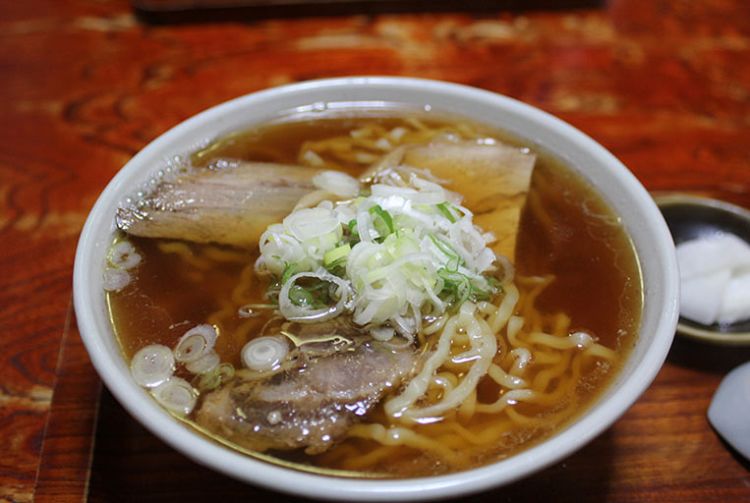
If you are a sake connoisseur, you will appreciate the rich history of the Yamatogawa Sake Brewery Northern Museum, a storehouse that was established in 1790. Learn about how sake is brewed through displays of the tools and equipment used, in order of the era they were from, to see their evolution. Cap your visit at the sake-tasting corner, where you can sample about 10 types of sake.
Venture further into Tohoku with a trip to Yonezawa , just over the border in Yamagata Prefecture.

















































